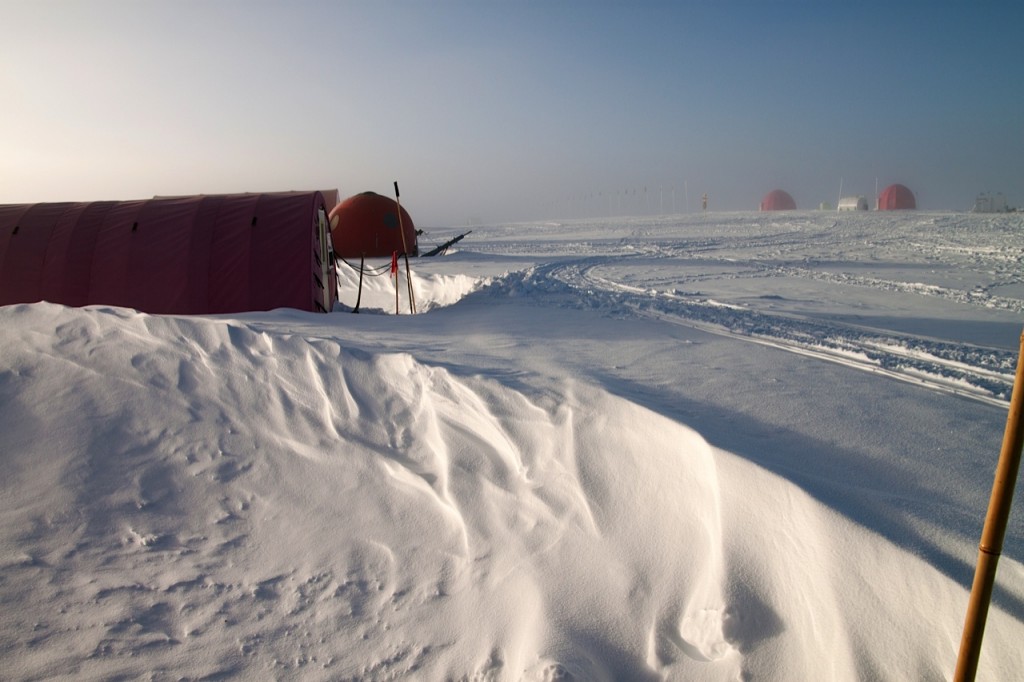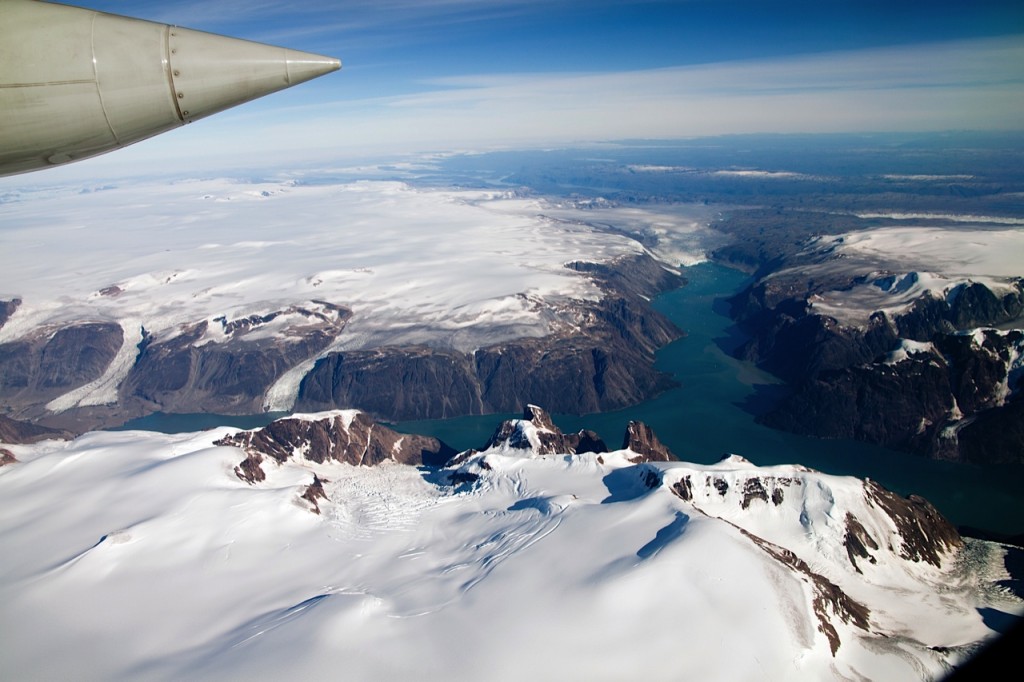9 February 2011
Two weeks at The Top of The World
Posted by Dan Satterfield
I was asked by the great folks at Earth Gauge (the National Environmental Education Foundation) to write about my trip to Greenland last summer, and it was published in their newsletter this week. I thought I’d share it here along with the pics. You can also see it on Earth Gauge here:
http://www.earthgauge.net/2011/two-weeks-at-the-top-of-the-world-a-trip-to-the-greenland-ice-cap
(Part 1 of 2)
Within just a few months last year, I found myself standing both at the South Pole and a few hundred miles from the North Pole. The trip to Antarctica was courtesy of the National Science Foundation, and I saw first hand the science being conducted in the most remote location on Earth.
Some of the most urgent science underway right now is the connected with obtaining ancient cores of ice at the top and bottom of the world. Together, these ice cores will help scientists understand how atmospheric and oceanic circulation patterns changed in the deep past. These natural fluctuations in Earth’s climate are important because they will help researchers to better understand climate change today.
An Amazing Opportunity
Thanks to Dave Jones at Storm Center Communications, I was asked to be part of a three person team that would visit NEEM – the North Greenland Eemian Ice Drilling project. We were going to be guests of lead U.S. scientist James White at the University of Colorado and Danish Scientists J.P. Steffensen and Dorthe Dahl-Jensen.
In late July, I found myself once again traveling with the amazing New York Air National Guard. The 109th wing flies U.S. scientists to the Arctic and Antarctic. We flew from its base in New York to Kangerlussuag, Greenland. Kanger, as the air crew and scientists call it, is an old World War 2 airbase just north of the Arctic Circle.
Landing at NEEM
Getting to the top of the icecap is a place only the NY Air Guard can take you and after a night’s sleep, that’s where we were headed! We stayed at KISS – the Kangerlussuaq International Science Support facility. This is where we were given our cold weather gear and sleeping bags. Greenland in summer would not be nearly as cold as Antarctica, but I would soon find out that it’s a lot snowier!
NEEM is at an elevation of 8,000 feet on top of the icecap in Northern Greenland. During my visit, about 30 scientists were attempting to finish drilling an ice core all the way to bedrock before the end of the short summer. The weather can change from sun to blinding snow in an instant. At a latitude of 77 degrees North, there would be no dark for my entire stay.

After a 3 day blizzard, my tent was a bit difficult to climb out of. The tents are heated to about -1C.
Just before noon on the 20th of July the ski-equipped LC130 landed on the snow runway at NEEM. It’s a landing one does not forget. Suddenly, the back of the plane opened up and a large pallet of supplies was pushed out the back. It quickly fell onto the snow and disappeared in a swirl of white.
There is only one heated place at NEEM. The large hand grenade-shaped structure is home to the kitchen, dining room, offices and a shower. Bathrooms consist of pits dug into the snow and the flag flying out front means “occupied!” Scientists, staff and visitors sleep on bunk beds in tents. A small heater keeps the temperature a little above freezing in order to to keep the humidity down. Three of us shared a tent about 300 feet from the main dome.
After settling in, we had a fabulous dinner and watched the weather get worse. By late evening it was snowing heavily with 30 mile per hour winds. I crawled into my sleeping bag and started to get warm. I drifted off to sleep, but was soon awakened by howling winds and a shaking tent. Nature called and at 3 a.m. I gathered enough courage to get down from my bunk and head to the outhouse: the tent over it was gone!
The blizzard lasted three days (and no nights). When the sun finally came out, it was like living on an ocean of snow. Deep blue sky and nothing but white.
The Arctic has been called the “great white quiet,” and believe me, the name fits. In my next post, the ice core and the science of NEEM …





 Dan Satterfield has worked as an on air meteorologist for 32 years in Oklahoma, Florida and Alabama. Forecasting weather is Dan's job, but all of Earth Science is his passion. This journal is where Dan writes about things he has too little time for on air. Dan blogs about peer-reviewed Earth science for Junior High level audiences and up.
Dan Satterfield has worked as an on air meteorologist for 32 years in Oklahoma, Florida and Alabama. Forecasting weather is Dan's job, but all of Earth Science is his passion. This journal is where Dan writes about things he has too little time for on air. Dan blogs about peer-reviewed Earth science for Junior High level audiences and up.
[…] This post was mentioned on Twitter by Chris Rowan, sciseekfeed. sciseekfeed said: Two weeks at The Top of The World http://dlvr.it/GCT0K […]